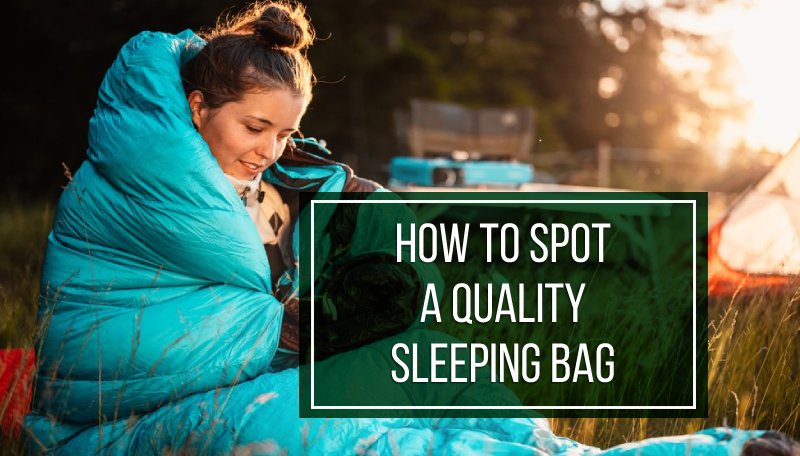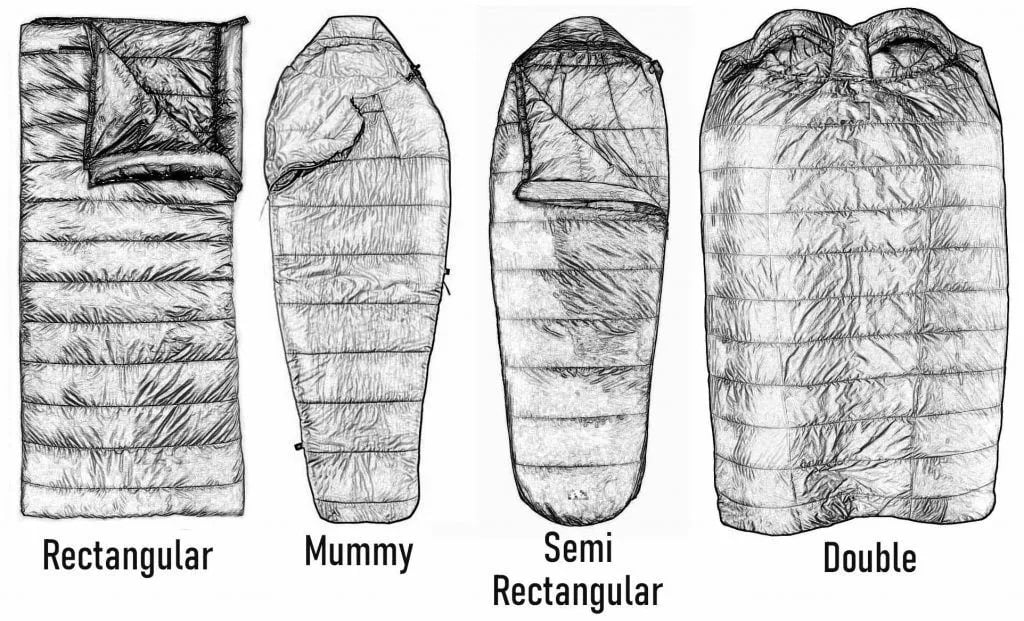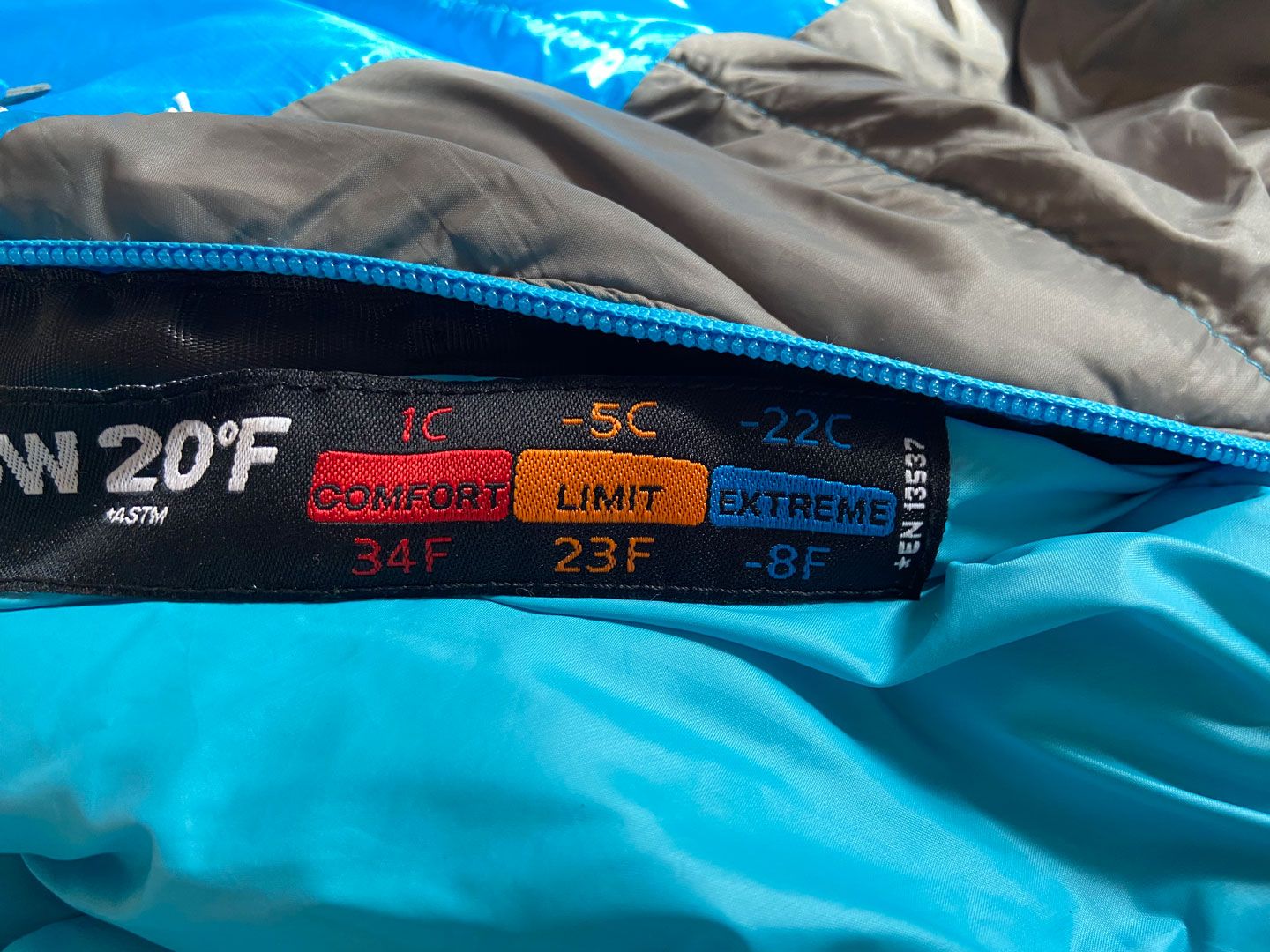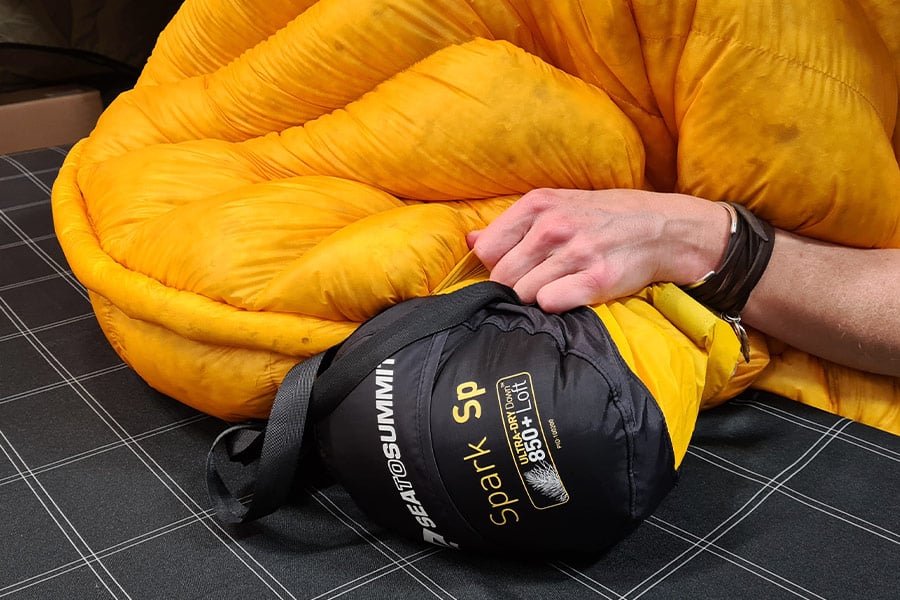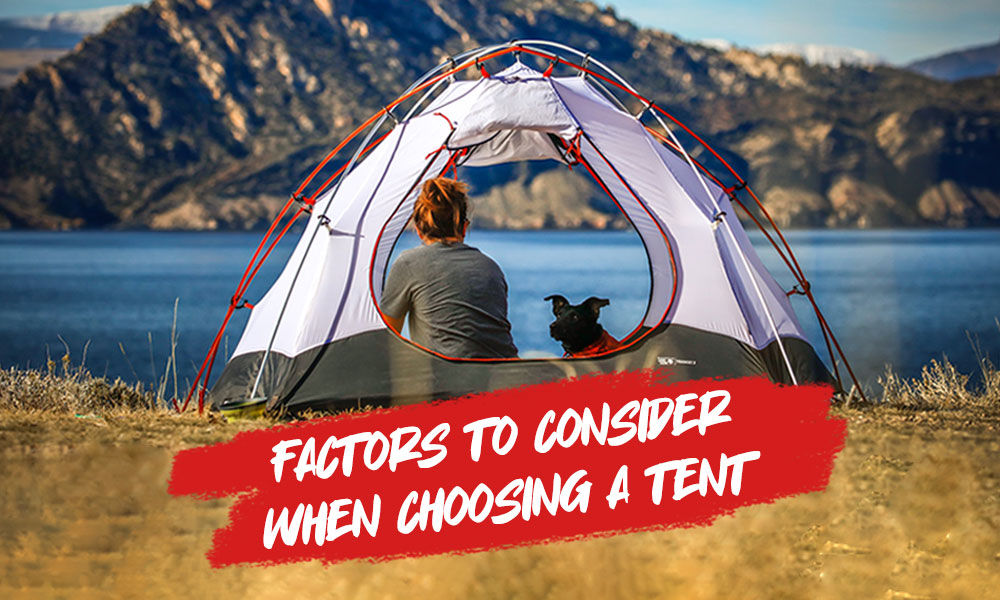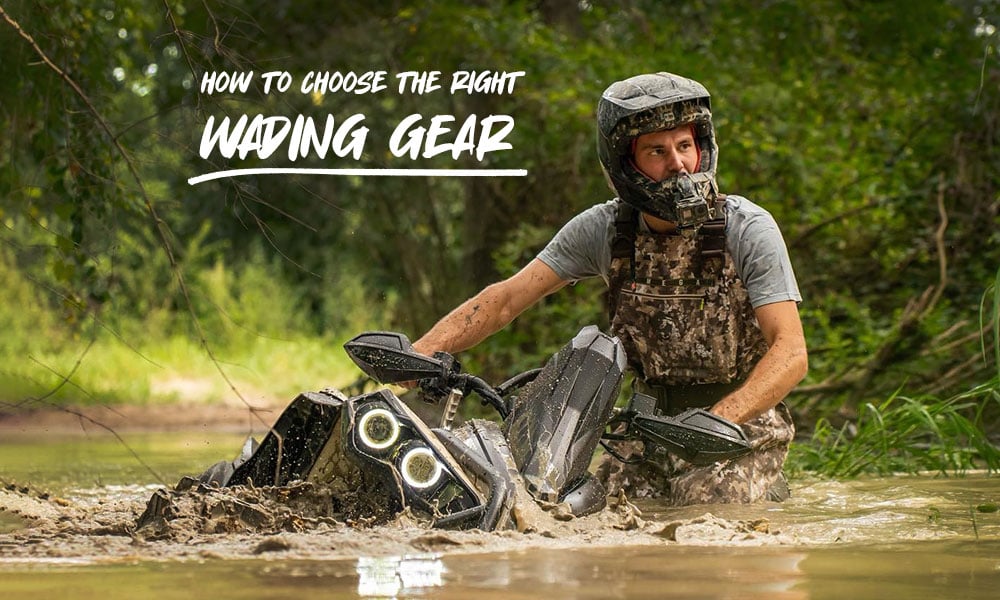Last Updated on
When picking out your next sleeping bag, finding one of good quality can mean the considerable difference between a comfortable night’s sleep and a restless one. That’s why it is important to consider a few key factors when shopping for a sleeping bag, as this will ensure that you choose one that meets your needs, keeps you warm and dry, and lasts through many uses.
In this blog post, we’ll discuss the key factors to consider when purchasing a sleeping bag and provide tips on testing the bag before making your final decision.
Table of Content
Factors To Consider When Shopping for a Quality Sleeping Bag
Sleeping Bags by Activity
Shapes
Sleeping Bag Insulation Material: Synthetics vs. Down
Temperature Ratings
Shell Material
Comfort Features
Trying Out a Sleeping Bag Before Purchase
Conclusion
FAQ
Factors To Consider When Shopping for a Quality Sleeping Bag
Sleeping Bags by Activity
Different activities call for different sleeping bags — each designed to keep you warm and dry in various temperatures and weather conditions. Let’s take a look at the types of sleeping bags that can be used while backpacking, camping, and mountaineering.
Backpacking
Backpacking sleeping bags are the most lightweight option available and are typically insulated with synthetic or down material. Because they are lightweight, these sleeping bags can often be compressed into small sizes, making them great for carrying on long trips. Some backpacking bags are designed to fit tightly around your body to decrease heat loss and weight to your pack.
Camping
For those who don’t plan to go too far from their campground, there is the camping-style sleeping bag. These usually have more insulation than their backpacking counterparts since they don’t have to worry about being very lightweight. Many camping sleeping bags also come with options such as blankets sewn in for added warmth or draft collars for reducing air drafts that could steal away your body heat overnight.
Mountaineering
If you plan on taking part in extreme cold-weather adventures such as mountaineering, then investing in a mountaineering sleeping bag is critical! These models usually use goose-down insulation to keep you warm when temperatures drop below freezing. Some high-end mountaineering sleeping bags come with features like hoods that provide extra coverage and protection against harsh winds.
Sleeping Bag Shapes
Choosing the right sleeping bag shape is essential because it can affect your comfort level. Also, the right style can help prevent cold spots and keep your body warm throughout the night. Let’s look at some of the different types of sleeping bag shapes available and their advantages.
Mummy Sleeping Bag
The most popular style of sleeping bag is the mummy shape. This type fits closely around your body to minimize air pockets and heat loss, making them great for cold-weather camping. Since mummy bags are contoured around your shoulders and hips, they usually don’t have as much room inside, which makes them less spacious than other styles.
Rectangular & Semi-Rectangular Sleeping Bags
Rectangular-shaped sleeping bags provide more space than a mummy design. So, if you’re looking for extra room when camping or prefer to feel less constricted, a rectangular sleeping bag may be the better option for you. The drawback, however, is that there’s more dead space that performs less efficiently in keeping you warm.
Semi-rectangular bags offer a hybrid design that combines the warmth and comfort of a rectangular shape with the convenience and added insulation of a mummy shape. The bag is typically wider at the top and tapers down toward the feet, providing ample room to move around while keeping you snug and cozy.
Kid’s & Women’s Sleeping Bags
Women’s and kids’ sleeping bags are specialized types of sleeping bags. They typically come in all shapes but have smaller designs tailored specifically to their body sizes and needs. Women’s sleeping bags often feature narrower shoulders and wider hips. Kids’ models usually come with added features like glow-in-the-dark zipper pulls or storage pockets tucked inside so that little campers can always access what they need most when out in nature!
Double Sleeping Bag
If snuggling up next to a loved one helps make camping enjoyable for you both, getting a double sleeping bag might be worth considering! A double sleeping bag provides enough space to fit two people comfortably without feeling too constricted by its walls. They even help maximize shared body heat, so no one feels left out in the cold!
Sleeping Quilt
Sleeping quilts are sleeping systems that work a bit differently from sleeping bags. The thing is that the bottom of a sleeping bag always gets crushed between you and your sleeping pad, not contributing much to keeping you warm. Quilts do not have this useless insulation in the bottom, saving you a lot of weight and space in your backpack. So these are ideal if you want an ultra-lightweight option for your backpacking trip. Sleeping in a quilt, you have more options for temperature regulation, and you won’t feel cramped like when sleeping in a mummy bag.
However, a good cold-weather sleeping bag is better than any quilt if you’re planning on winter camping.
Sleeping Bag Insulation Material
When choosing a sleeping bag, insulation is one of the most important factors that you need to consider. The two main types of insulation are down and synthetic – each with its unique set of advantages and disadvantages.
Down Fill
Down insulation provides a superior warmth-to-weight ratio and excellent compressibility making them great for tossing into your backpack and carrying on long journeys. Additionally, down is superior in retaining heat in cold, dry weather. On the downside, down fill tends to lose its warmth-retention quality when wet and can take longer to dry. Down sleeping bags also tend to be more costly, so if you’re looking for an economical option, these might not be the best fit for you. A higher cost will pay off in extended durability, though.
Synthetic Fill
These insulations are also very popular choices due to their affordability compared to down fill. Synthetic sleeping bags offer decent levels of compressibility but, unlike down options, do retain their insulating qualities when damp.
As you see, different uses require different levels of performance from your sleeping bag, so knowing what kind of activity you have planned is key! For example, backpacking trips may call for a lightweight sleeping bag filled with down. Winter camping may require tougher synthetic materials that can withstand harsher elements such as rain or snow. Mountaineering often calls for higher-quality down options rated for extreme temperatures.
Sleeping Bag Temperature Ratings
Temperature rating is another important aspect that allows us to classify all available bags into three groups. First, we have summer sleeping bags made with lighter materials to keep you comfortable in warmer temperatures of 35 degrees and higher. 3-season sleeping bags are designed for temperatures ranging from 15-30 degrees, which makes them perfect for spring and fall trips. Finally, 4-season sleeping bags, built for much colder conditions down to freezing levels and lower, are valid if you plan high-altitude and harsh winter camping.
Sleeping Bag Shell Material
Polyester and nylon are commonly used to construct sleeping bags due to their lightness and strength. Still, both offer different advantages, so let’s take a closer look at how these two materials affect a sleeping bag’s performance and which one might be best suited for your individual needs.
Denier
The denier (D) of fabric measures its thickness, with higher numbers indicating thicker material that is more durable and strong. For example, a 10D shell is much thinner than a 75D shell, making it better suited for lightweight packers, while the 75D may work better as an all-purpose option since it provides greater protection.
Heat Retention & Breathability
When it comes to heat retention, polyester shells have been proven to hold heat better than nylon ones, making them great for cold-temperature camping trips. Nylon, on the other hand, offers better breathability, which helps reduce condensation buildup inside the bag and keeps you dry during the hot summer months.
Waterproofing
To make sleeping bags waterproof, manufacturers often use either waterproof/breathable membranes or Durable Water Repellent (DWR) coatings on the shells. Both are designed to shield against moisture from outside elements such as rain or snow. The critical difference between membrane technology vs. DWR coatings is that membrane tech is usually more breathable.
Sleeping Bag Comfort Features
Draft Collars
Draft collars are often filled with down materials or synthetic insulation and are designed to keep cold air out by sealing up around your neck. Some models even come with adjustable drawstrings for a customized fit and effective closure against outside elements.
Baffles
Baffles are either vertical or horizontal type. Vertical ones provide excellent shape retention, while horizontal ones create more loft for greater thermal efficiency.
Zippers
Snag-free zippers help reduce annoying disruptions so that you don’t worry about getting stuck mid-zip every time. Additionally, consider the location of a zip. Left-handed campers better choose bags with the zipper on the right side and vice versa.
Hoods
When choosing a hood style, there are two main types: built-in vs. removable options. Built-in hoods provide efficient coverage but may not be as adjustable as removable ones.
Trying Out a Sleeping Bag Before Purchase
Offline
When shopping for a sleeping bag in a store, it’s important to evaluate the comfort and fit of the bag before making a purchase. Try different models and consider factors such as size, weight, and materials to determine which fits you best. Pay attention to features like zipper length and location, draft collars, baffles, and hoods – these can make a big difference. Check how easy it is to carry the bag around. Also, test how much it compresses since the last thing you want is an oversized package taking up unnecessary space in your backpack!
Online
First of all, read customer reviews from other experienced users who have already tested the product! You can also compare different sleeping bags side-by-side by their specs so that you know for sure what each offers. When evaluating, pay special attention to materials used (like denier rating of fabrics) and waterproofing/breathability ratings – these will play a major role in determining how successful your outdoor experience will be!
Conclusion
No matter where you plan to use your bag, it’s important to go into the purchase with an understanding of what constitutes a good quality sleeping bag. From researching materials and features to testing for comfort in-store or online, there is no substitute for knowledge when it comes to making this kind of decision.
Now, head to the GRITR Outdoors store because we offer a great selection of the best sleeping bags that fit any budget and outdoor need! Also, don’t forget to check out our camping tents, outdoor cooking equipment, and other gear.
FAQ
What are the most important factors to consider when selecting a sleeping bag?
The most important factors to consider when selecting a sleeping bag include the temperature rating, size, shape, the type of insulation used, the weight and packed size, shell materials, and features.
What type of insulation should I look for when purchasing a sleeping bag?
Synthetic insulation is typically more affordable and insulates even when wet, while down insulation is lightweight and packable. Both types of insulation will help keep you warm in cold temperatures.
What is the best way to store my sleeping bag when not in use?
The best way to store a sleeping bag when not in use is to hang it in a cool, dry place. It should also be stored in a breathable bag or container to prevent moisture buildup.
Are there any tips for extending the life of my sleeping bag?
1. Air out your sleeping bag after each use and store it in a cool, dry place. 2. Store it in an airtight container or compression sack. 3. Make sure it is completely dry before putting it away. 4. Use a sleeping bag liner to keep your sleeping bag clean. 5. Make sure to regularly inspect and spot-clean any areas that have come into contact with dirt or liquid.
